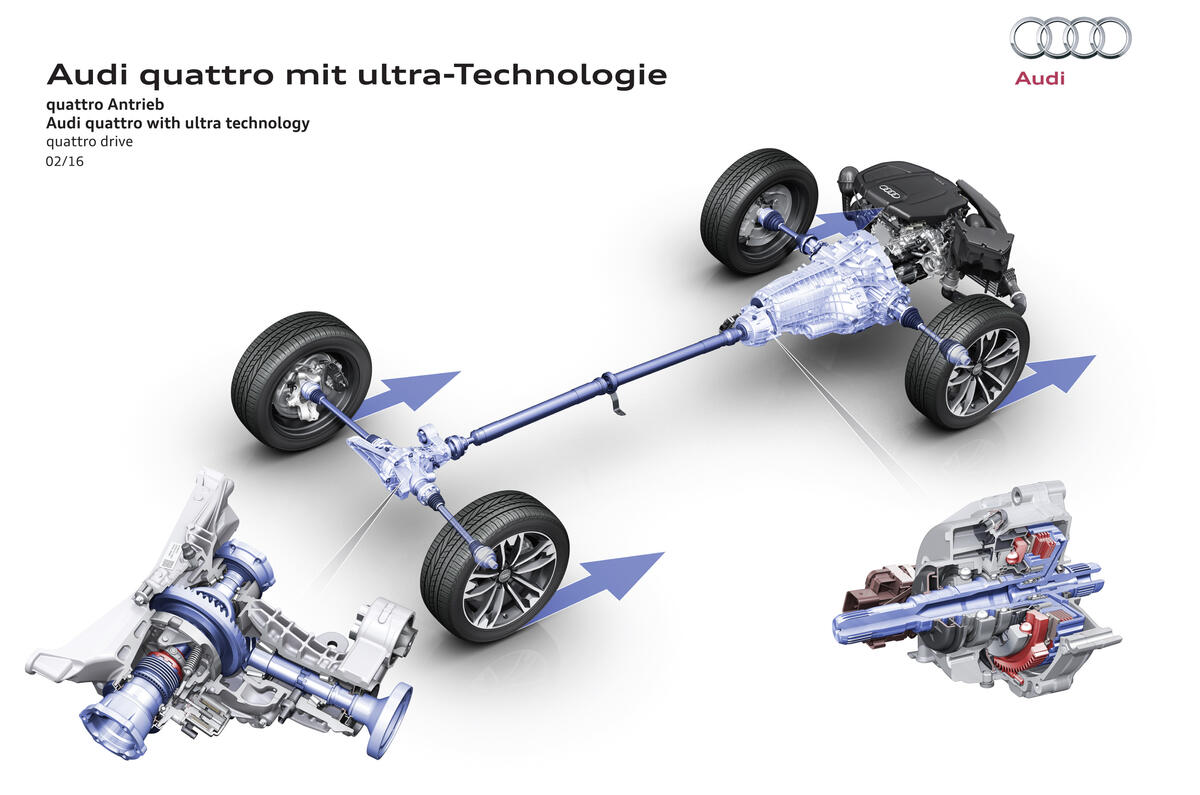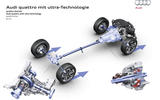So it looks like farewell to Audi’s bizarre taste for overhanging engines.
If German press reports are true, which seems highly likely, bringing the future development of the MLB platform to an end signals a complete break with an engineering quirk that dates back to Audi’s roots in the Auto Union and NSU brands.
Audi’s traditional layout is a longitudinally mounted transmission positioned between the front wheels, with the engine mounted ahead of that. But while having the engine overhanging the front wheels might not have been a significant issue in the days of lightweight, small-capacity engines, it became much more of an issue from the 1980s onwards as engines got more powerful and heavier.

These natively developed Audis were for a long time roundly criticised for poor handling, poor steering feel and a nose-heavy ride - most of which was a direct consequence of having the mass of the engine in the extremity of the car’s nose.

For example, there might have been little to touch Audi’s prescient 1986 80 and 90 models, the build quality, craftsmanship and styling of which still stands today, but those heavy iron-block four and five-cylinder engines mounted in the nose were metaphorical boat anchors.
The 1994 Audi A4 still had the same layout, but it had double wishbone suspension up front (highly unusual then for a front-drive car) and lighter V6 engines, rather than the huge in-line five-pot, and the result was far, far better. But in comparison to rear-drive BMW and Mercedes of the period, the Audi was, in terms of pure driving ability, still a long way behind class leaders.

Over the past 20 years, Audi’s A4 and A6 and related models have been improved incrementally, but the brand has resisted dropping this oddball layout. The latest version of the longitudinal set-up benefited from a slight improvement in weight distribution but remained a fundamentally dud concept from another age in automotive engineering.










Join the debate
Add your comment
AUDI & VW.
Wanting to ditch FWD
I don't where to start.
The MLB platform is a link between all Volkswagen group brands.
There is no only the Audi A4 to A8 based on the MLB but also all the SUV's of the VW group with longitudinal mounted engines, including the Porsche's Cayenne and Macan, the 300K€ Bentayga and the upcoming Lamborghini Urus.
Killing that platform is killing the whole part-sharing strategy which took years to be implemented.
Now let's come to the A4 and A5 with a reminder on their competition.
Alfa Romeo Giulia, Giorgio platform : shared with the next Maserati Ghibli and Quattroporte
BMW 3/4 series, CLAR platform : shared with BMW 5, 7, 8 series and Rolls-Royce.
Mercedes C class, MRA platform : shared with E class, S class and CLS.
Audi A4/A5, MQB platform : shared with VW Passat, Golf and Polo... are you kidding me ?!???
A MQB platform is understandable for entry level FWD 4 cylinder models but it's the best way to kill the RS4 and RS5, but when you design a car you have to think to all versions.
What I'm try to say is that the A4 and A5 should be MSB based, otherwise there could be no 4 cylinders version on the expected MSB-based A6 too, which currently avaible with them.
I think they could design a much smaller version of the MSB and another one especially for the SUV.
The MSS platform of the R8 has to be kept because that's a basis for Lamborghini too.
@Elmediterraneo - true but
"Porsche upcoming mid-engine
You talk about that 960 project which is surely cancelled due to the diesel scandal ?
You know Lamborghini had the L140 project since 90's but couldn't develop it.
When Audi bought Lamborghini they've finance the project which became the Gallardo in 2003.
Since that Audi took the opportunity to get a return on his investement and make a cheaper version of the Gallardo called the Audi R8.
I think the future of the R8 will be decided about what they're gonna do with Lamborghini, Porsche could keep his modern luxury VW Beetle known as the 911.